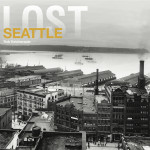Notes from a return visit to Tokyo
# Didn't press a single crosswalk button the whole time I was gone.
# In downtown areas of each city, there were a variety of sidewalk materials. Perhaps it seems patchwork, and when implemented improperly definitely provides a walking hazard and wheelchair barricade, but the mixing of tile, bricks, and concrete does provides a more interesting landscape than concrete alone.
In addition to the normal subways and trains I also took an interesting line that I don't think existed when I lived there, the "New Transit" Yurikamome (gull) line
* Automated wheeled vehicle on dedicated roadway
* Poor connection to other lines
o Must exit station to transfer, unlike most lines through Tokyo
o No unified ticket for transfer, unlike most lines through Tokyo
* About 150% the price of other lines in Tokyo
* Cuts time from old train route, reaches places that were basically car destinations (over Rainbow Bridge to Odaiba), as well as newly constructed destinations
* Strangely has ambiguous ownership, unlike other lines
Street signs with bunches of flashing LEDs on them at poorly defined or small intersections
Often no sidewalk; the roadway is a shared space where everyone must pay attention to each other, and cars hold the most responsibility because they are the most dangerous. Cars come to a stop if necessary to allow other vehicles/pedestrians to pass.
Pedestrian bridges at major intersections of large roads and near children's destinations like parks and schools. Sometimes to remove pedestrians from blocking voluminous vehicle traffic, more often to provide alternate methods of crossing the road, even a small road, when it is near a park or school, or is a channel between a residential area and school.
Construction sites well lit for safety; string lights to clearly mark edges of construction area; automated flag wavers
At tricky locations, almost excessive use of police officers. Once saw one officer for each direction, car and crosswalk.. total of 12 traffic officers at that intersection.
Saw new raised freeway under construction. Traffic continued to flow around and under it. Freeway dives underground just as Viaduct may. Unfortunately I was in a bus at the time and didn't take a picture.
Highway buses supplementing overcrowded or indirect trains. Cheaper, less used (= chance of empty adjacent seat) than train. When traveling the same route, the bus is much slower. Airport routes cut out stressful connections, save time.
